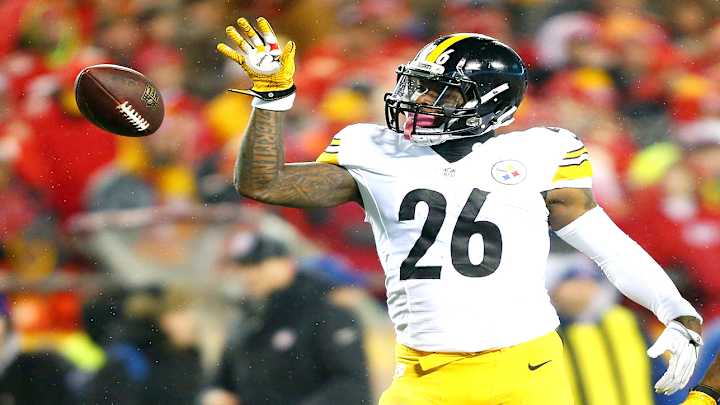Strategy and Advice for Picking your DFS Running Backs

It’s DFS Week at SI.com. All week, we and our 4for4 colleagues will help provide you with a foundation for DFS success this season. In this installment, 4for4’s Chris Raybon gives you his best practices for making lineup decisions at running back.
As more and more NFL teams shift to a committee backfield, there become fewer and fewer safe RB plays in DFS. Below are five tips that will ensure you're choosing the right ones.
1. Target volume over efficiency
In the real world of NFL football, 4.5 is a pretty good yards per carry average and 3.5 is a pretty bad one. But in the fantasy realm, that's only a difference of 0.1 points per carry. The guy getting 20 carries at 3.5 yards a pop is going to outscore the one getting 10 carries at 4.5 yards a pop every time. Thus, volume reigns supreme when choosing backs for your DFS lineup.
It's not only carries you're looking for, though. Receptions work just as well. Add carries to receptions and you get touches, which is how you should measure volume. Touches have a direct correlation to running back production. Touch volume is what makes Le’Veon Bell and David Johnson essentially matchup-proof. Bell’s 28.3 touches per game and Johnson’s 24.3 before his Week 17 injury ranked first and second last season. In fact, volume is so prevalent that even snaps have a strong correlation to fantasy points for running backs.
Strategy and Advice for Picking a DFS Quarterback
2. Take game script into account
The average team runs on almost half its plays when leading or tied, but one-third of its plays when trailing. For those unfamiliar, score differential on offense goes by the term game script. Running backs tend to flourish in positive game script when their team is leading. Backs that don't play on passing downs are risky in DFS because their volume depends on said game script. Three-down workhorses like Bell and Johnson are the safest plays.
A game's point spread does a good job of predicting game script. Favorites tend to be in positive game script more often than underdogs. This translates right to bottom-line rushing stats. In 2016, for instance, favorites averaged 0.98 rushing touchdowns per game while underdogs averaged 0.75.
Combining game-script advantage with home-field advantage provides the largest edge. Data shows home-favorite return value at a rate 20% greater than non-home favorites.
4for4 Fantasy Football: 92% of our subscribers made the playoffs last year. Use our Draft Analyzer and customize for your league's settings. Subscribe here.
3. Make sure your running backs will get scoring-position usage
Two-thirds of rushing TDs occur within the opponent's 5-yard line. Almost 90% of them occur within the opponent's 20. If you're picking backs that don't get goal-line carries, you're lowering your upside.
That's another reason you want to target backs on teams that are favorites. The favorite will project for more points, which in turn increases the odds of their running back punching in a score.
Receiving backs who don't get goal-line work will have good games, too, but they are a lot harder to predict.
Understanding DFS Salaries and Building Winning Lineups
4. Target cheap backups filling in for injured starters
Getting the most touches for the least salary is the ultimate goal when choosing a running back in DFS. Since backs get hurt more than any other position, more cheap value plays pop up there than any other position. More often than not, you want to take this guaranteed source of cheap points, especially in cash games. Any back less than $1,000 above minimum salary won't need more than 14 or 15 touches to return value.
5. Avoid being overly contrarian in tournaments
Much is made about going against the grain in tournaments, and it's true that, to a certain degree, you need to differentiate your lineup to win. Running back is not the position to go too far off the radar, though. Since it's not too hard to predict the backs that will get a lot of touches, it's rare for a top scorer to go lightly owned. Running backs average the highest ownership in first-place lineups in the DraftKings Millionaire Maker, and the same is true for first-place lineups in the FanDuel Sunday Million. Two-thirds of the first-place lineups on both sites use a back that's in at least 20% of all lineups.
